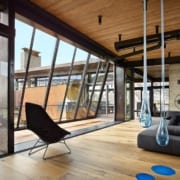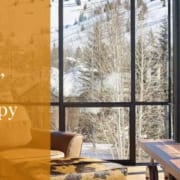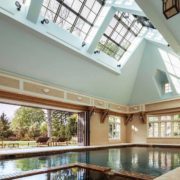Sound Transmission Class & the Architectural Pursuit of Serenity
More than ever before, architects are looking for solutions to noise pollution. While we may all agree that Rock ‘n’ Roll Ain’t Noise Pollution, other forms of noise definitely are.
Too much noise directly affects a homeowner’s enjoyment of their space. It could be traffic, an airport or rail line, the nightclub or busy late night restaurant across the street – or a bit of all of those. The cacophony of modern urban living has magnified the pursuit of a refuge, an oasis of peace and quiet. Architects seek to deliver solutions for serenity and calm through their architectural design.
In terms of windows and doors, architects can do quite a bit about noise – it is a frequent topic of discussion in our design assist meetings and increasingly so. The topic is best addressed by talking about Sound Transmission Class (STC) ratings.
What is Sound Transmission Class — or STC ?
In a nutshell, Sound Transmission Class ratings (STC) are an industry accepted method to average how much sound is stopped by something. STC ratings are used for pretty much all the components of a building envelope – windows, doors, walls, insulation materials, you name it.
A Sound Transmission Class (STC) rating is, therefore, an instrument measurement of how much noise is stopped. The higher the STC number the greater a material’s ability to block sound.
For architects delving into the zany, fun-filled world of sound abatement, another acronym that will pop up sooner rather than later is the OITC – Outdoor/Indoor Transmission Class.
The OITC rating is used to measure the sound transfer between outdoor and indoor spaces. It uses a specific decibel (Db) range (80 Hz to 4000 Hz) which makes it a better measure for low sound frequencies such as road noise. As with STC ratings, the higher the OITC number, the more sound resistant the product is.
For the purposes of this conversation, we’re going to focus on sound solutions that address primarily Sound Transmission Class (STC) – no matter how egregious that approach may be to Acoustic Engineers who just coughed up their coffee when they read this sentence. Peace Brothers.
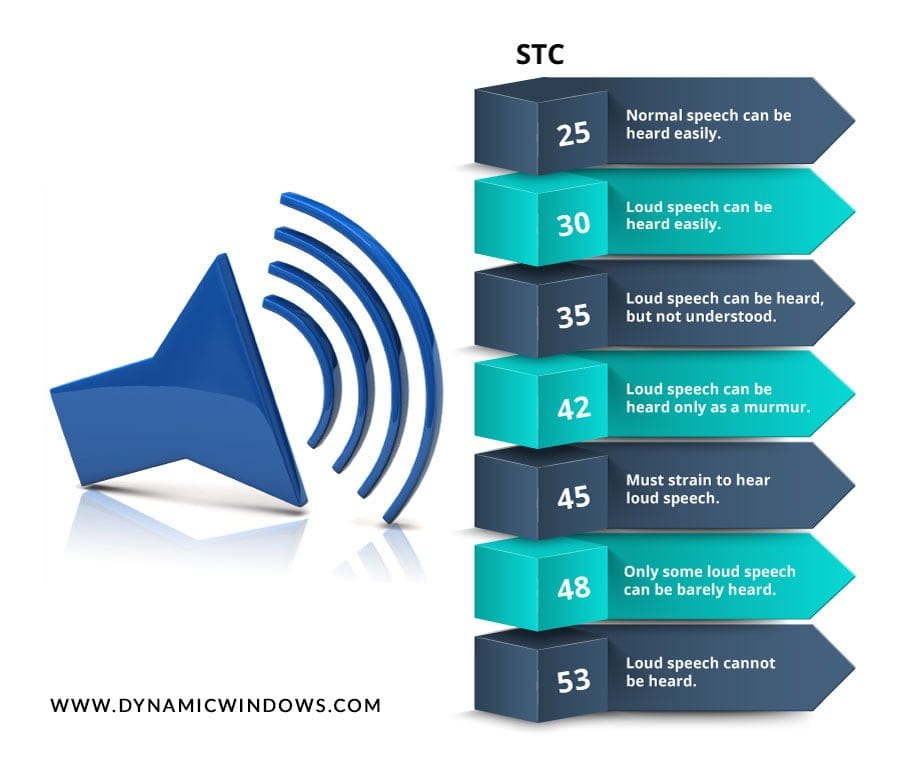
Above: Sound Transmission Class Chart
What are the main considerations for Sound Transmission Class (STC) ratings for windows & doors?
- Glazing composition – whether single, dual or triple glazed.
- Glass types – monolithic, laminated, or combinations of different glass types & thicknesses.
- Air-space dimension between the panes of glass – more important than you might think.
- Frame material – metal, wood or other: wood has better acoustic properties than metals for example.
- Frame construction and fit: the sash needs to fit snug to the frame with tight compression against a good quality weather-strip. If the fit is loose, the sound will simply travel through the gaps and the enhanced glass specification will be less effective.
So let’s delve into a brief exploration of each of these:
1. Glazing composition
Glass blocks sound by reflecting the sound waves away and by absorbing the sound waves.
In essence, Single pane windows are least effective. Dual panes are much better. Triple glazing is NOT necessarily better than dual glazing. “Whoa!!” we hear you say, ”that’s a bit counter-intuitive”. Well yes it is but that’s all part of the thrill aboard the sound abatement crazy train…there’s an explanation.
2. Glass types
Monolithic glass is the term used for straightforward solid glass. It does make you sound smart when you say it but that’s all it means. Monolithic glass can be used to make single, dual or triple glazed windows. The thicker the pane, the more sound it blocks. Up to a point.
Laminated glass is much more effective at blocking sound than monolithic. Laminated glass is also referred to as Acoustic Laminated Glass – both consist of two or more sheets of glass, bonded together with one or more Polyvinyl butyral (PVB) interlayers. The PVB interlayer(s) reduce sound vibrations and so absorb more sound as it travels through the glass. Now you’re combining the reflective sound properties as well as the sound absorption properties.

The impact resistance layer can isolate a majority of the noise.
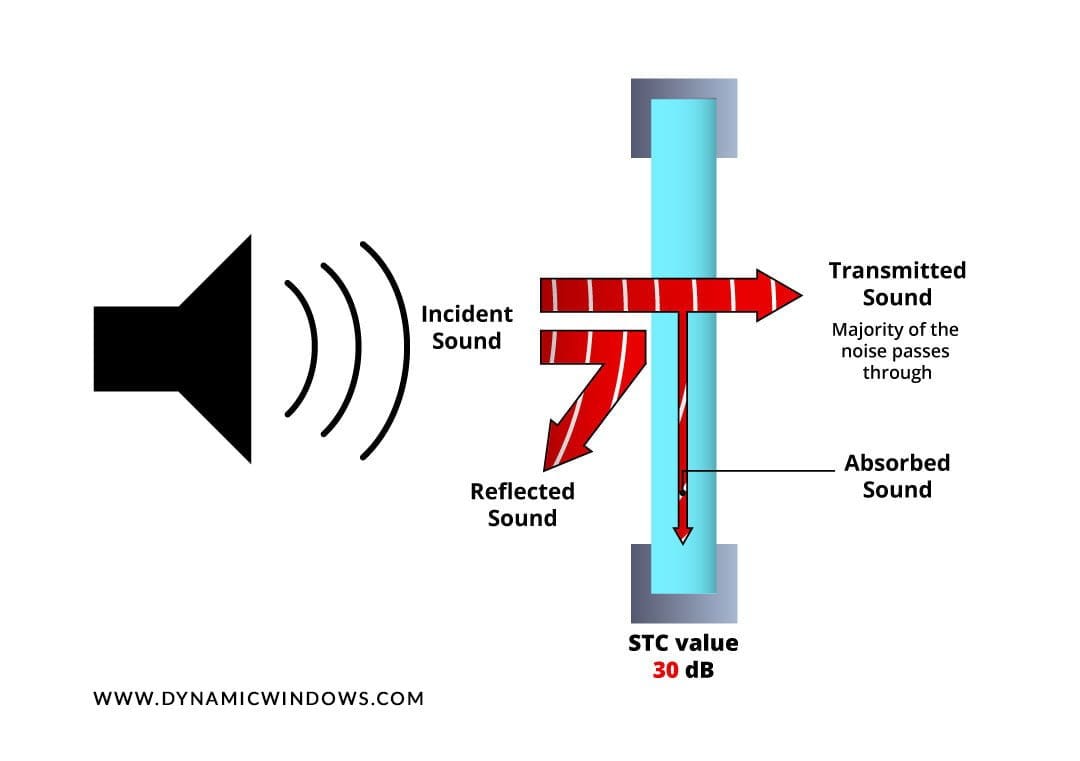
Clearly, in the pursuit of sound abatement, laminated glass is a key player. That’s a starting point but there is much more that can be achieved within the glass types arena if we understand how sound travels and what blocks it – this gets into a more detailed examination of the composition of the glass types that make up a sealed Insulated Glass Unit (IGU).
Sound travels on multiple different frequencies. STC measures 18 different frequencies to determine a rating. This is because different sound frequencies are blocked by different materials and material thicknesses. Multiple thicknesses used in combination are better than multiple uses of the same thickness. Each thickness blocks a different frequency. Stick with it now – it gets even more exciting.
Take a dual pane sealed unit as an example. The outer pane has laminated glass comprising 6mm/.090 interlayer/5mm sandwiched together. There’s an air space then the inner pane of laminated glass comprised of 4mm/.030 interlayer/3mm.
There are 4 different glass thicknesses and two different interlayer thicknesses with each doing a different blocking job. Understanding that traffic noise for example travels primarily on a different set of frequencies than the music from the nightclub across the street enables the composition to be crafted specifically to the primary problem noise. Who knew? Well, the Acoustics Engineer does obviously, that’s why they get hired.
The net impact is noticeable: a dual glazed window with an appropriate air space, different thickness of glass and a laminate glass pane can achieve better STC results than triple glazing.
We’ve mentioned the air space a couple of times. That space is a lot more important to sound abatement than it may at first appear.
3. Air spaces and what they contribute to STC
The air space between the two pieces of glass (or three pieces if it’s triple glazing) is every bit as important as the glazing composition. No kidding. The wider the air space, the more effective it is. If the air space is too narrow (below ½”), it actually acts like a spring, picking up the sound waves and boosting them forward towards the second pane.
It’s not advisable to just keep increasing the airspace until you reach your STC performance. Aesthetically it would look like doo-doo and pretty soon wouldn’t fit into a window frame. Most sealed units aim for a ½” airspace. A little more is good if the glass will still fit in the frame. A little less is counter-productive for STC purposes.
For high STC ratings – say STC 50 or more – the concepts outlined above can be taken a step further by having two window sash in the frame, thereby creating an entirely new noise dampening air space in-between the sash. Here’s one solution created for a project in San Francisco:

Air space is a very effective element for Sound Transmission Class STC purposes – make sure they are used effectively in combination with the design of the glazing.
4. Frame material
A detailed discussion of the sound transmission properties of different metals, wood or other materials is beyond the scope of this conversation. There are a couple of simple observations that may offer a starting point for discussions:
- Wood is a better sound blocking material than metals. Wood has a cellular construction which means it has airspaces throughout. The air spaces dampen sound as well as absorb vibrations. Metal is solid and compact in its basic form – no air spaces within the substrate so lower sound dampening and vibration absorbing qualities as a result.
- Metal windows can be designed for STC ratings using the techniques and principles we’ve talked about here, it’s just that the material itself isn’t as helpful to the goal as wood.
5. Frame construction and fit
This is pretty much self-explanatory.
- The window and frame need to be a tight fit to stop noise as well as water and air.
- A well designed window will have properly positioned and effective weather-stripping.
- The operating hardware should be of a type and design that ensures the sash is compressed firmly against the weather-stripping.
- Fixed sealed windows block more sound than operable windows by an extra 3 to 5 points.
- If the fit is loose or there are gaps you can throw a cat through it’s not going to block much noise no matter what the glass spec.
On the Flip Side…
Having spent all this time talking about keeping sound out – what about keeping it in? Or even some sounds in and others out?
Recording Studios are a perfect example where STC considerations abound and where the principles we’re talking about here can be applied to great effect. Exterior sounds need to be kept out, interior sounds kept in and managed for maximum audio results.
Many homes have Music Rooms these days – guitars, pianos, dance floors, stereos with sub-woofers. Sound insulating these rooms can make a big difference to the other folks in the house. Not much point blocking the traffic noise if you can’t sleep because little Jimmy is practicing on his new fiddle that he hasn’t learned to tune properly. STC rated glazing partitions can keep these rooms light and inviting while the noise in.
Games Room in the design? Yep, STC works for those too. We recently completed a home in Colorado with its own bowling alley, surrounded by STC glass to keep the rest of the Games Room quiet for those playing pool, ping pong and the pinball machines.
The same concept applies to conference and meeting rooms in a business environment. It’s generally not conducive to a good meeting to have it in a soundproof bunker in the basement. STC partitions can offer a quiet interior with the additional benefit that the people in the office can’t hear the Principal go off the deep end when told the DD set has to be re-worked because the acoustic engineer blew a hole in the sound abatement details.
Been there, done that, right?
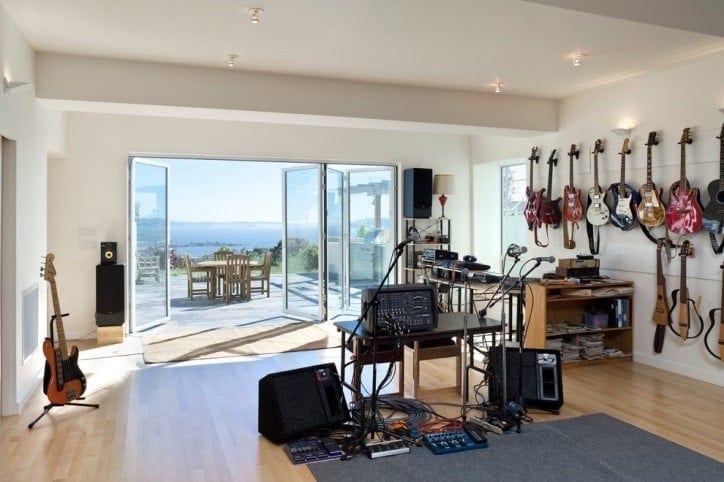
Some final miscellaneous points to wrap this up:
A “typical” dual glazed window generally has an STC rating between 26 – 33 depending on glass thickness and air space dimension.
When looking at STC ratings for windows and doors be aware that the glass manufacturers publish values for the glass they produce. This is different from the rating of that same glass once included into a window frame.
Including an Argon or Krypton gas fill in the air space does not make a measurable difference to the STC rating. Krypton does help keep Superman out of your house however.
The Sound of Silence
There’s a lot more to STC and acoustics than we’re qualified to talk about of course, that’s where collaboration between the architect, acoustic engineer and window fabricator offers the best path forward.
Answers are there to the challenges we encounter in pursuit of the Sound of Silence, you just need a solutions-oriented team to cut through the noise.
Click here to download this article in PDF format.



